Jun
26
2013
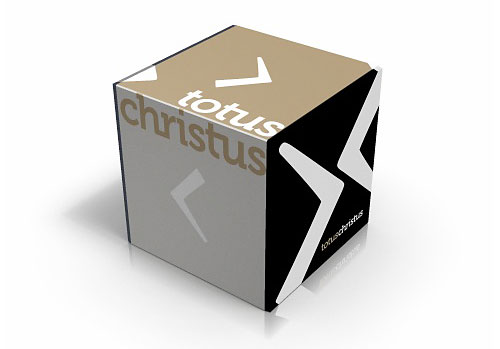 “Smooth narrative” is one of the arguments against the inclusion of the final verses of the Gospel of Mark. The Bible isn’t known for its smooth narrative, anyway, but the ending does seem to pick up the speed suddenly. Is there anything in the text that might point in the other direction? How about literary structure?
“Smooth narrative” is one of the arguments against the inclusion of the final verses of the Gospel of Mark. The Bible isn’t known for its smooth narrative, anyway, but the ending does seem to pick up the speed suddenly. Is there anything in the text that might point in the other direction? How about literary structure?
Mark follows a convention found throughout all the Bible’s texts, based upon the Creation Week and the Levitical Feasts (Leviticus 23). The gospel has a number of “Covenant-shaped” cycles, and the entire book is itself “Covenant-shaped.” This final cycle is left incomplete if the gospel ends at 16:8 (see below). The question is, does this “clockwork” internal textual evidence outweigh the shabby history of the manuscripts? Continue reading
Comments Off | tags: Literary Structure, Mark | posted in Bible Matrix, Biblical Theology, Totus Christus
Mar
4
2013
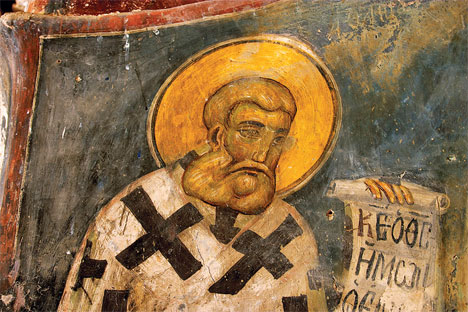
or the Covenanto-Architecturo-Historico-Grammatico-Muso Method
“A seal is meant to be broken.”
During the first of his recent lectures in London, James Jordan tore a page out of his Bible. It was the page announcing the New Testament as a separate book with its own pagination. It is one thing to interpret the New Testament in the light of contemporary literature and history, but their importance pales in comparison to the texts being recognized as a continuation of the Scriptures.
Continue reading
3 comments | tags: Ephesians, Fractals, Hermeneutics, Literary Structure, Revelation, Systematic typology | posted in Bible Matrix, Biblical Theology, The Last Days, Totus Christus
Sep
7
2011
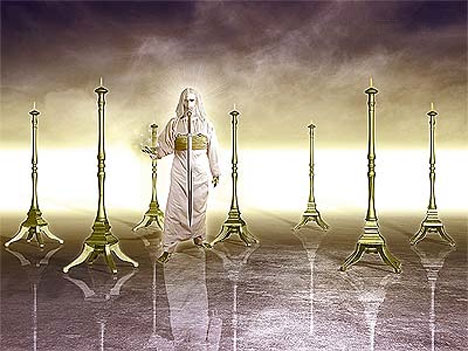
The description of Jesus in Revelation 1 follows the Bible’s new Creation matrix.
Jesus is the Word, and His manifestation is described in the pattern of the Creation Week. He is the Word made flesh, the Sacrament who “tabernacled” among us, and so is described in the pattern of the Tabernacle. He is the Word in Government, ruling over the pastors of the churches, and so we also see elements of the corresponding Dominion pattern.
Revelation is indeed a sublime book. Every stanza refracts the structure of every section, which in turn refracts the structure of the book, which in turn refracts the structure of the entire Bible. This literature comes from the mouth of the uncreated, the One who creates things fully formed from nothing; it is irreducibly complex. Nothing can be added, and nothing can be taken away.
Continue reading
10 comments | tags: James Jordan, Literary Structure, Revelation, Tabernacle | posted in Bible Matrix, Biblical Theology, Creation, The Last Days, Totus Christus
Jun
11
2011
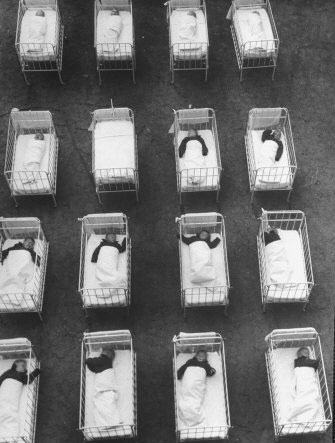
You can find this over at Doug Wilson’s blog. I’m reposting it here because I’ve just spent over an hour responding to Doug R. and John B.’s good objections to comments on Shakin’ The Tree, so I’ve not got time to write anything new. Also, posting it here means I can find it more easily in future! So, at the risk of becoming the anti-paedobaptist/anti-hyperpreterist blog…
Baptism Points Away
Continue reading
22 comments | tags: Abraham, Baptism, Circumcision, Covenant Theology, Doug Wilson, Parenting, Tabernacle | posted in Against Hyperpreterism, Bible Matrix, Biblical Theology, Ethics, Quotes, Totus Christus
Apr
15
2011
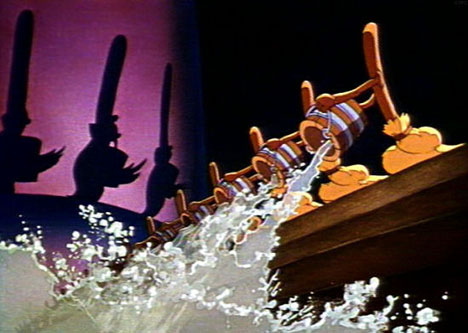
or Baptizing the World
After Pentecost, the firstfruits church met in the Temple. Over the next few decades, the Jewish leaders barred these worshippers from their premises. What they didn’t realise was that the glory was departing as it did in the time of Ezekiel, only this time it was inside people who were living Temples as Jesus was.
Continue reading
10 comments | tags: Baptism, China, Dispensationalism, Persecution, Postmillennialism | posted in Biblical Theology, Christian Life, Creation, Ethics, Totus Christus
Mar
28
2011
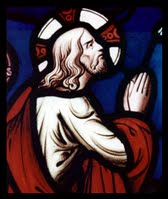 .
.
Kellen Carroll, a friend of commenter Greg Fields, has had a look at John 17 with the Bible Matrix.
“My pastor has been going through the book of John for the past six years or so. We just recently finished chapter 17, at the same time I came to the section in Totus Christus where you mentioned the Covenantal Treaty.
Continue reading
3 comments | tags: Covenant Theology, Feasts, John, Literary Structure | posted in Bible Matrix, Totus Christus
Mar
24
2011

“And thou shalt set bounds unto the people round about, saying,
Take heed to yourselves, that ye go not up into the mount,
or touch the border of it:
whosoever toucheth the mount shall be surely put to death.”
Exodus 19:12
The Bible beats blood and water into us over and over again. Blood is death. Water is resurrection. Blood is the Bridegroom and water is the Bride.
Continue reading
5 comments | tags: Ascension, David, goliath, Laver, Moses, Revelation, Sinai, Tabernacle | posted in Bible Matrix, Biblical Theology, Creation, Totus Christus
Dec
28
2010
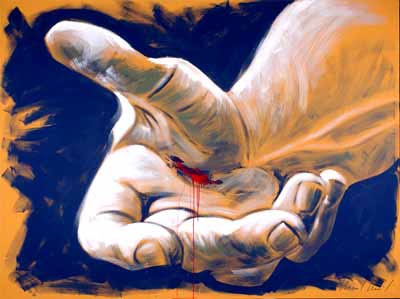
“Who may ascend into the hill of the LORD?
Or who may stand in His holy place?
He who has clean hands and a pure heart…” (Psalm 24:3-4)
In Leviticus, an Israelite is to lay his hand on the sacrifice that covers his sin and allows him to draw near to God. It was the red hand of death and the whiteness of a pure sacrifice willing to take the “stroke” (plague).
“And Abraham stretched out his hand and took the knife to slay his son.”
Genesis 22:10
But the Lord Himself covered Moses with His hand as the consuming fire of His glory passed-over the mountain. It was the hand of life and the whiteness of imparted glory. As far as was possible, Moses saw the Lord as He was, because he was like Him.
Continue reading
Comments Off | tags: Abraham, Genesis, Leviticus, Moses, Passover, Revelation, Typology | posted in Biblical Theology, Totus Christus
Dec
27
2010
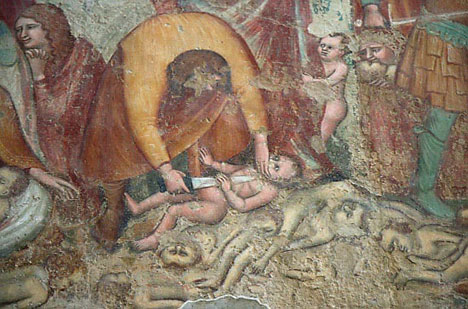
A Christmas sequel to Joseph Gets Passed Over.
The subject matter of this article was corrected, revised, and expanded in December 2018 and published here: Matthew 2: Jerusalem as Egypt.
1 comment | tags: AD70, Add new tag, Altar of the Abyss, Christmas, Gehenna, Herod, Literary Structure, Matthew | posted in Bible Matrix, Biblical Theology, Totus Christus
Dec
16
2010

“Then Jesus told them: You can be sure that tax collectors and prostitutes will get into the kingdom of God before you ever will! When John the Baptist showed you how to do right, you would not believe him. But these evil people did believe. And even when you saw what they did, you still would not change your minds and believe.” (Matthew 21:31-32)
James Jordan teaches you to observe the universals in Scripture. I believe one of the most important is the Totus Christus pattern, head and body, and its counterfeits and distortions.
As mentioned around here a couple times (sorry, a couple of times. I’ve been reading too many Americans), the curse upon Adam concerned his head, and his responsibility to provide for and protect the body. The curse upon Eve concerned her body, her role in producing offspring. Both curses were a limited form of barrenness.
But what of the relationship between head and body? James Jordan writes:
Continue reading
2 comments | tags: Abortion, Altar of the Abyss, Covenant curse, Covenant Theology, Doug Wilson, Genesis, James Jordan, Marriage | posted in Biblical Theology, Quotes, The Last Days, Totus Christus
 “Smooth narrative” is one of the arguments against the inclusion of the final verses of the Gospel of Mark. The Bible isn’t known for its smooth narrative, anyway, but the ending does seem to pick up the speed suddenly. Is there anything in the text that might point in the other direction? How about literary structure?
“Smooth narrative” is one of the arguments against the inclusion of the final verses of the Gospel of Mark. The Bible isn’t known for its smooth narrative, anyway, but the ending does seem to pick up the speed suddenly. Is there anything in the text that might point in the other direction? How about literary structure?
































